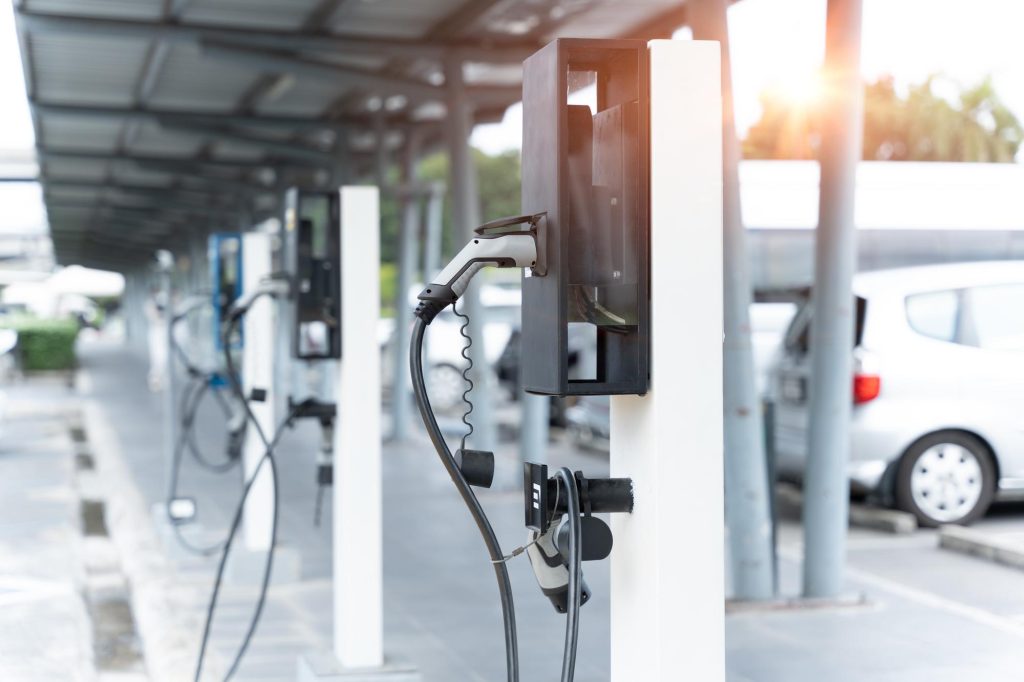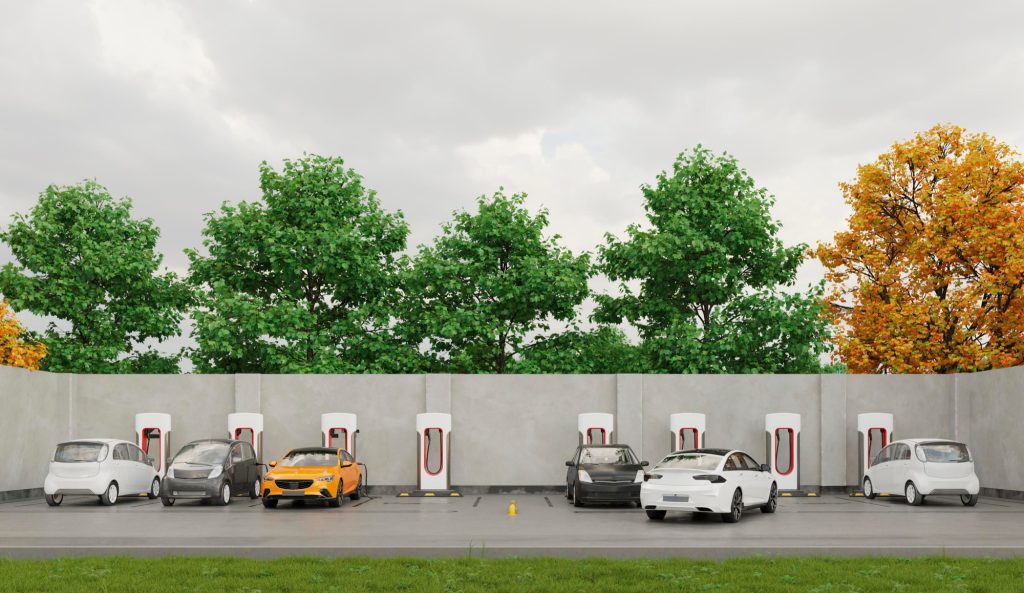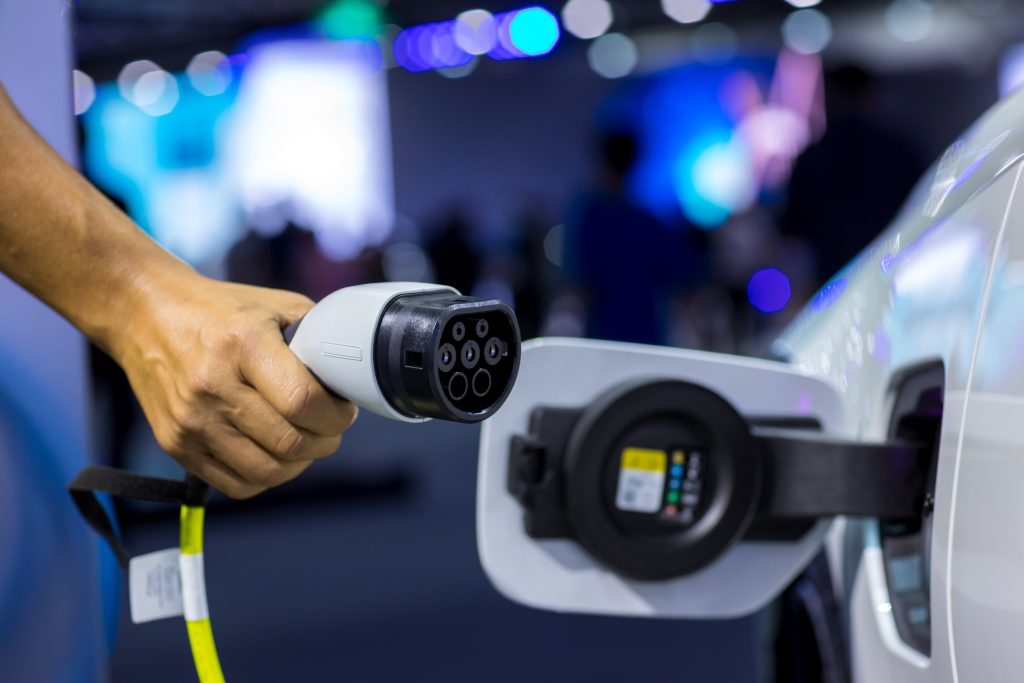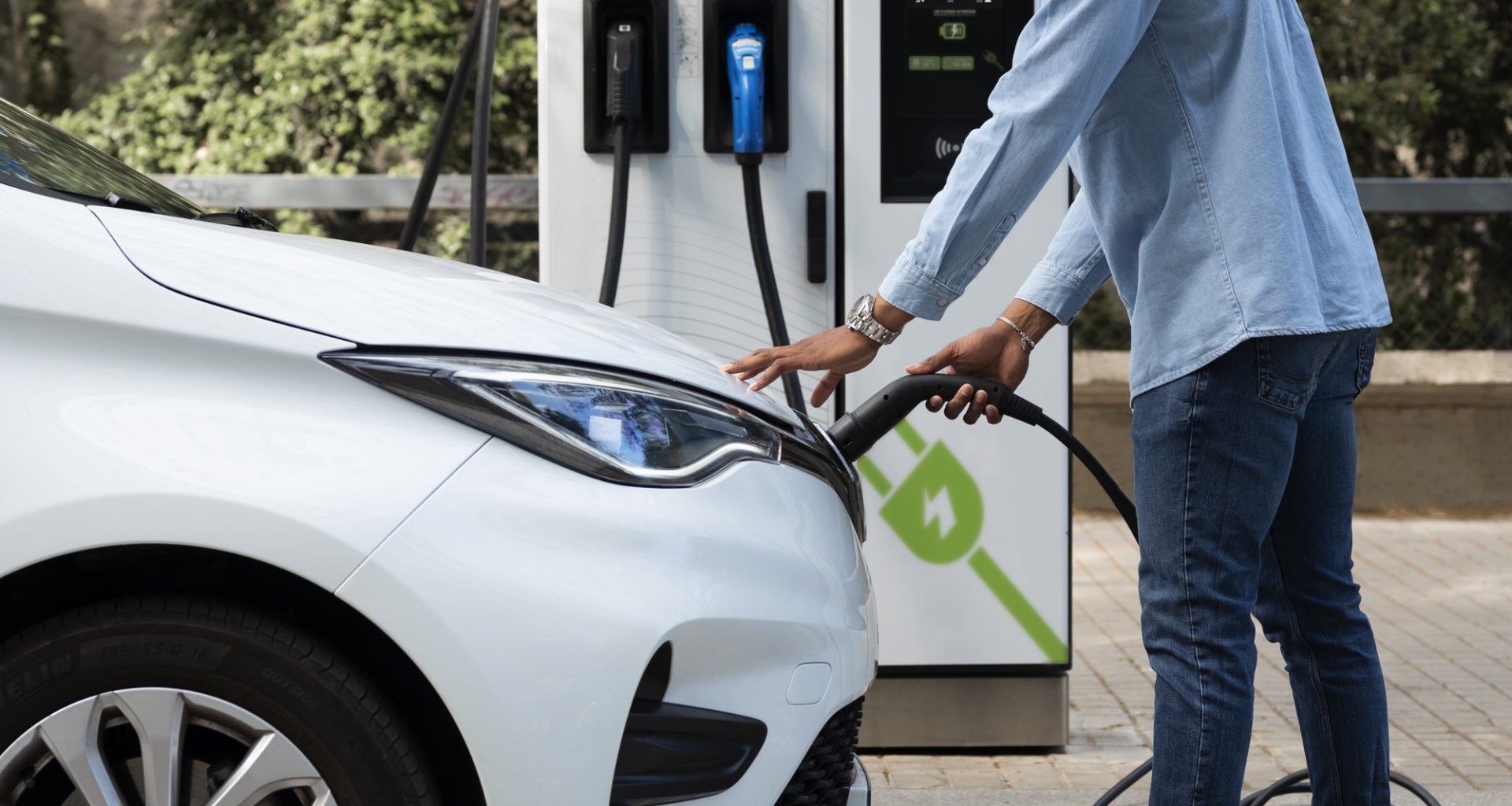The impressive growth in the popularity of electric cars is a clear sign of what the future of mobility will look like. We will go from 5 million electric vehicles in 2018 to over 130 million in 2030. But have you ever wondered exactly how these innovative cars are charged when they’re on public roads? We invite you to find out through this article by Eco EV Driver, where we will provide you with a detailed analysis of how to charge electric cars on the street.
Considering that more and more people are opting for electric vehicles, understanding the ins and outs of how to charge them on the street becomes a useful and necessary skill. From the different charging stations available, charging times, to tips on efficiency, safety, and regulations to keep in mind, we propose this analysis to guide you and help you on your journey towards more ecological and sustainable mobility.
We will break down step by step the stages of the street charging process so that you are prepared and can take full advantage of the benefits offered by electric cars, whether you are an interested user or you do it for your own electric vehicle.
Table of Contents
- The street charging process step by step
- Types of street charging stations for electric cars
- Tips for charging your electric car efficiently on the street
- How long does it take to charge an electric car on the street?
- How to Plan Your Route for Street Charging During Long Trips
- Safety When Charging Your Electric Car on the Street
- How to Avoid Energy Theft When Charging on the Street
- Regulations and Rules for Charging Electric Cars on the Street
The street charging process step by step
For most novice electric vehicle drivers, the process of charging their car on the street may seem somewhat intimidating. However, it is simpler than it seems, especially as you gain experience with it.
First, it is essential to locate your nearest charging station. You can use any map application on your smartphone that contains information about electric vehicle charging stations in real time. Some of these apps show you how many charging stations are available in a particular location, what type of charger you need, and the rate for using the service.

Importantly, before moving to the charging station, you need to verify that the charging point is compatible with your car. Not all electric cars are, so to speak, “equal.” Therefore, before starting the charging process, check if your car is for fast charging (as is mostly the case with Tesla) or slow charging. This will tell you what type of charging point you should use. Even though the chargers are universal, some may not be suitable for your vehicle.
Remember, not all chargers are the same, and not all vehicles will be able to accept all the energy that a charger can provide. As a general rule, if your car cannot accept the maximum amount of charging energy, the charging speed will automatically adjust to protect your car’s battery.
Given the current development of charging stations, you should also make sure whether it includes the charging cable, especially if you do not have one in the car (or do not have a fast one). It is also advisable to read, if you do not use an official app, read the comments to know.
Now, are you ready to charge? Well, once you have connected the charging cable to the vehicle’s port, the charging point will ask you to authenticate the operation. Depending on the charging station, you can do this in several ways: credit card, debit card, or a special membership card provided by the provider. Once the payment has been approved, the charging process will begin immediately.
A tip, most charging stations are affiliated with various charging networks and the same station can offer different prices depending on which app you usually make the payment with. From Eco EV Drive, we recommend downloading and always using the native app that appears on the charger itself, as it is usually the cheapest.
Finally, when the charging process is finished, make sure to return the cable to the charger and close the cover of your vehicle’s charging port. Think of other drivers and try to leave the charging station clean and ready for the next user.
Types of street charging stations for electric cars
On the street, you will find several charging stations that are essential for keeping your electric car powered. This is very similar to how gas stations are crucial for gasoline vehicles. However, what you may not know is that not all charging stations are the same. Although they all serve the same purpose, there are crucial differences between them that must be understood to ensure effective and efficient use. Therefore, let’s explore the various charging stations you can find when you are on the street.
The infrastructure for electric car charging on the street has increased by 60% in the last two years.
First, there are Level 1 charging stations. These stations use a 120-volt alternating current (AC), which is the same as you normally have in your house. These stations are the most basic and convenient since they do not require special installations. However, the charging is very slow. An average electric car will need about 20-22 hours to fully charge a depleted battery using a Level 1 station.
Second, there are Level 2 charging stations. These use a 240-volt alternating current (AC) and are capable of charging an electric car much faster. An average electric car will need 3 to 8 hours to fully charge a depleted battery using a Level 2 station. Although these stations will require a special installation and may be more expensive, their charging speed can be worth it.
Finally, there are fast direct current (DC) charging stations. These stations are the fastest option you can find. They use a direct current (DC) and can deliver a charge of up to 480 volts, which means they can charge an electric car up to 80% in just 15-30 minutes. These stations are usually located in high-traffic areas and are useful for long trips. Although they are the most expensive option, they are also the most convenient. This type of station is usually advertised by the power and the more power they have – within the limits accepted by your car – the faster they will charge.
Tips for charging your electric car efficiently on the street
First, it is essential that you understand the capacity of your electric car’s battery, expressed in kilowatt-hours (kWh). It is also useful to understand how much energy you can recover in relation to the charging time. For example, a 7.5kW charging station can charge a car with a 50kWh battery around 6-7 hours from zero. But keep in mind that most of the time you won’t be charging from zero.

Therefore, for efficient street charging, there are some tips and tricks you can follow:
- First, it is essential to always have near your charging card or app. Most street charging points require a charging card or a specific app to activate the charging process of your electric car. It is advisable to always have this means of activation at your disposal and to have completed the necessary registration on the various charging service platforms.
- Don’t forget to always have your charging cable. Although many public charging points offer charging cables, it is better to be prepared and bring your own cable in case the charging point does not have one.
- Additionally, you can use various station-finding apps available on the market; these apps will help you easily find the nearest charging stations and also provide you with information about their availability and charging speed.
- Experiment with different charging speeds. Some fast charging stations can provide you with enough electricity in just 20-30 minutes to complete your journey, although this type of station tends to be more expensive. Slower charging stations, although they take a little longer, are a cheaper option and can be an excellent choice if you don’t mind waiting.
- Always have a plan B: sometimes to get to a charging station you need to deviate from your route. Plan what alternatives you have if when you arrive at that station it is occupied or out of service. It will save you more than one problem.
- Also, always remember to follow local rules and regulations for charging electric cars on the street. Some cities may have restrictions on how long you can leave your car at a charging point, especially if it is on a public road. Therefore, always check the signage of the charging places and make sure to respect the rules.
- Finally, but not least, keep in mind that street charging will generally be more expensive than home charging. Therefore, it is recommended to plan ahead and charge only what is necessary to comfortably reach your destination, but without too much battery left over.
How long does it take to charge an electric car on the street?
The duration of charging your electric car on the street can vary significantly depending on several factors. Some of these include the remaining charge level of your car’s battery, the total size of the battery, the type of charger you are using, and environmental conditions. It is important to take all of this into account to properly manage your expectations and plan your trips.
The remaining charge level of the battery: If your battery is almost depleted, logically it will take longer to fully charge it than if it still had a significant residual charge. In general, the batteries of electric cars do not discharge completely. The battery management system generally prevents this from happening to protect the battery and prolong its useful life.
The size of the battery: Electric cars come with different battery sizes, measured in kilowatt-hours (kWh). In general terms, larger batteries require more time to charge. For example, a 60 kWh battery will need more time to charge than a 40 kWh battery, all else being equal.
The type of charger: The charging time will also depend on the type of charger you are using. As we have mentioned in previous sections, there are different types of charging stations, each with different power levels (measured in kilowatts, kW). The higher the power of the charger, the more quickly your car will charge.
Environmental conditions: Temperature can also affect charging speed. In extreme cold conditions, battery efficiency decreases and charging can be slower. You may find that charging stations have heated power outlets to improve charging efficiency in cold climates.
To give you a more specific idea of charging time, an electric car with a 60 kWh battery could take approximately 8 hours to fully charge at a typical level 2 (7 kW) charging station. But at a fast charging station (50 kW), the same car could charge up to 80% in just 30 minutes. Remember that these are estimates and the actual charging may be different.
To give you a more specific idea of charging time, an electric car with a 60 kWh battery might take about 8 hours to fully charge at a typical level 2 charging station (7 kW). However, at a fast charging station (50 kW), the same car could be charged up to 80% in just 30 minutes. Remember, these are estimates, and the actual charging time can vary.
Moreover, bear in mind that faster charging is not always the better option. Charging at high speeds can generate more heat, which can be harmful to the battery if done frequently. Therefore, it’s best to use fast charging only when necessary and prefer charging at lower speeds for everyday use.
How to Plan Your Route for Street Charging During Long Trips
One of the main criticisms of electric cars is that they are not optimal for long trips. Nothing could be further from the truth. If you plan well, an electric car can be as efficient, or more so, than a gasoline car for long journeys. Our advice in this case is as follows:
- Leave with a fully charged car. It may seem obvious, but the more charged your battery is, the further you can go.
- Plan one or two stops depending on the distance to be covered, always estimating a 25% battery charge. If your car has, for example, a range of 400 kilometers, plan the first stop no later than 300 kilometers. The car can always consume more depending on weight, acceleration, and speed, and running out of battery is never pleasant.
- Look for fast, multiple, and well-surrounded stations. Generally, those at highway or expressway service areas are most recommended for long trips. If you go to a station in the middle of nowhere, you might end up bored and make your trip more tedious.
- Plan multi-themed stops: make charging the car not an inconvenience but something you do while having breakfast, lunch, or resting. If it’s in a city, you can see something of that place, etc.
Safety When Charging Your Electric Car on the Street
Safety while charging your electric car on the street is of utmost importance. Here we offer a guide on what to keep in mind to do it safely.

First, choosing the charging station is crucial. Similar to how you would with a traditional service station, you should choose one that is well-lit and in a safe area. Remember, charging your car can take time, and you might need to leave your vehicle unattended.
Second, proper handling of the charging equipment is essential. Make sure the plug and cable are in good condition before connecting your car. Avoid using equipment with signs of erosion, damage, or malfunction. Always follow the manufacturer’s instructions and never try to force connections.
Although electric cars and charging stations are designed to be safe, being aware of and respecting electrical risks is vital. Always turn off your vehicle before connecting or disconnecting it. Avoid touching connectors with wet hands or in a humid environment. Also, never try to increase the amperage to charge faster. This can damage both the car and the charging station.
Interaction with other users at charging stations is also important. Respect courtesy rules and avoid leaving your car plugged in after it has finished charging. Charging stations are shared resources, and respecting other users ensures a good experience for everyone.
Caring for the Environment
Finally, charging your electric car also means being environmentally conscious. Avoiding spills or leaks of liquids, taking care of nearby green areas, and respecting the recycling guidelines of the charging station are practices we should all adopt. Remember, every little action counts in our effort for a more sustainable world.
In summary, charging your electric car on the street is a safe process if you follow the mentioned tips and precautions. Practice electrical safety, respect other users and the environment, and make the most of the advantages of owning an electric car.
Can I Charge My Electric Car on the Street While It’s Raining?
Is it safe to charge the car while it’s raining? At first, it may seem worrying to combine water with electricity. However, it’s important to clarify that yes, you can charge your electric car in the rain without any problem. Electric vehicle manufacturers and charging station providers are fully aware of varying weather conditions and take necessary measures to ensure user safety when charging their vehicle.
How to Avoid Energy Theft When Charging on the Street
Charging electric cars on the street can expose you to certain risks, including the unpleasant theft of energy. Although it is not a common problem, it has happened and, of course, it is important to be prepared to avoid such a situation. So, how can we ensure that our energy is not stolen while charging on the street?
Use reliable charging stations: Just like with ATMs and other public services, your first line of defense is to choose reputable places to charge your car. Look for charging stations in well-lit places and near areas of activity.
Charging station security: Many charging stations are equipped with security systems to prevent energy theft. This may include things like electronic locks that only allow energy to flow when the connector is secure or security cameras monitoring the charging area.
Unique payment system: By paying in advance the specific amount of charge, you can ensure that only the energy you have paid for is used. Many electric car charging stations offer this option, which can help limit the amount of energy a thief could steal.
While you cannot completely eliminate the risk of energy theft, being informed and taking proactive steps can help minimize that risk. The most important thing is to be aware of your surroundings and use charging stations that offer you the highest possible security.
What to Do If You Realize Your Energy Has Been Stolen After the Fact?
In that case, it is most appropriate to contact the company of the charging station. Many providers have customer service lines to report these situations. It may also be useful to contact local police and provide any information that may help in a possible investigation.
Energy theft can be a frustrating obstacle for electric car drivers, but following these strategies and being aware of potential warning signs can help you protect your car and your wallet in the street charging process. Remember, the goal is to enjoy the benefits of driving an electric car, and that includes efficient and safe charging on the street.
Regulations and Rules for Charging Electric Cars on the Street
Driving an electric car promises to be a completely new and exciting experience. But did you know that it also involves a series of new regulations and rules? Yes, if you plan to charge your electric car on the street, there are some rules and regulations that you should be aware of. Let’s address this crucial aspect.
Street Charging Regulations
The first thing you should know is that the charging of electric cars on the street is regulated by local, state, and even national regulations in some cases. These regulations can vary depending on the location and may include aspects like the following:
- Charging times: Some cities and municipalities establish specific times during which electric vehicle charging on public roads is allowed.
- Public access charging stations: In many places, street charging stations are public access, meaning any motorist can use them. However, you should be aware that charges may apply.
- Safety regulations: There are regulations governing safety during the charging process, including the installation and maintenance of charging points.
Parking Regulations
Parking is an essential aspect of charging electric vehicles on the street, and regulations on this topic can vary significantly from one city to another. However, some general rules apply in most areas.
Firstly, parking and charging an electric vehicle at a designated charging station is allowed, although in many cities the vehicle must be plugged in and actively charging to occupy that space. This is done to maximize the availability of charging stations for all users. To know precisely, you should check the signage and municipal regulation of your locality.
Additionally, some cities or municipalities may have specific parking zones with restrictions for electric vehicles during certain hours of the day, and special facilities are provided for their charging. An example of this is the “blue zones” or the well-known Blue Zones.
In most cases, public street charging stations are designed for short to medium stays, with the idea of allowing more users access to charging throughout the day. Generally, these places are not intended for long-term or overnight parking, especially if the car has already finished charging.
Finally, it is important to keep in mind that rules and regulations regarding parking for charging electric vehicles are constantly changing. Governments are actively working to optimize the use of charging spaces, balancing the needs of electric vehicle drivers with those of all citizens. Therefore, it is always a good idea to check current local regulations before charging on the street.
In conclusion, charging electric vehicles on the street is a challenge and a reality that we face together as a society in the transition to a more sustainable and environmentally conscious future. For this, it is key to thoroughly understand the charging process, understand the different types of stations available, and learn to plan our routes and use these resources efficiently.
It is essential to always be aware of local regulations and ensure our safety and that of the vehicle during charging. Thus, while we have tried to provide a comprehensive and practical overview particularly useful for new electric vehicle users, it is important to remember that the industry and regulations are constantly evolving.


